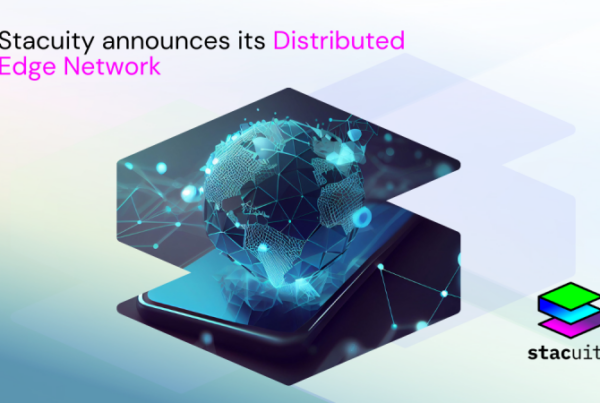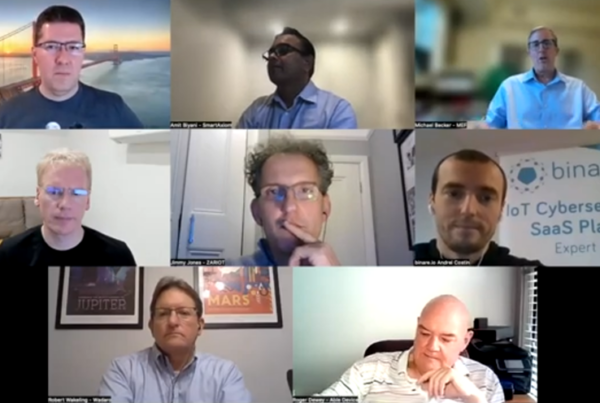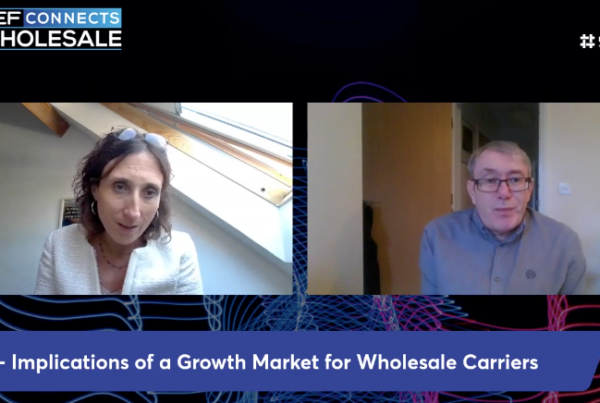MEF Connects Innovators sessions are all available to watch on demand – In this panel – Andrew Parkin-White, MEF IoT Programme Director, was joined by David Hambling – CEO Asia Pacific, Pod Group, Steffen Sorrell – Chief of Research, Kaleido Intelligence and Michel Zwijnenberg – Investor and Consultant.
This discussion focused on the potential of eSim tech to change the IoT space, and asked a panel of experts to share their insights into it’s future impact.
Michel’s view is that eSIM forms part of the virtualisation of telecoms and solves problems for IoT connectivity, particularly around network quality and the legality of permanent roaming and will prove be easier to use in a wide range of devices.
David sees eSIM as providing seamless deployment and provisioning and for the futureproofing of devices. Steffen sees a large market developing despite a slow start with covid having an impact on growth. He expects to see 1.1bn active eSIM profiles across M2M and IoT landscapes with reducing cost and complexity.
Different opportunities are emerging in different geographies. Europe is taking off because it has 50 plus MNOs and market access from MVNOs. There is a vibrant market with eSIM hubs and lots of players.”
Michel expects new business models to emerge through virtualisation, similar to the change from CD to MP3 to music streaming models. Disintermediation will create opportunities and, from the mobile network operator (MNO) perspective – it can help customers to obtain value out of eSIM as it offers easier connectivity for global deployments, alleviation of permanent roaming restrictions and the management of the sunset of technologies (2G, 3G).
David sees that new business models will emerge around eSIM has appeal to many IoT sectors. He sees that global coverage is difficult for the MNO to achieve, particularly with higher data use at an effective price.
David believes that there will be interesting developments as profiles are aggregated and addressed globally, making it easier for customer and safer for long term deployments. He does see that commercial issues may emerge but switching and swapping profiles will help – the automotive industry can ship vehicles manufactured globally to other locations and the shipped vehicle would need to download a cost effective local profile.
Different opportunities are emerging in different geographies. Michel states that Europe is taking off because it has 50 plus MNOs and market access from MVNOs. There is a vibrant market with eSIM hubs and lots of players. The US market is same size as Europe but only three main operators implying a very different market not only eSIM but also in wholesale and fewer initiatives are available.
David sees a similar set of conditions in Asia Pacific around eSIM but there are some misconceptions around profile swapping. Manufacturers are looking for virtual SIMs and want to reduce costs and ship out around the world so customers can download profiles. Steffen is of the opinion that there are strong use cases in automotive, logistics (eg. vaccine distribution, manufacturing, industrial use case and utilities. He estimates that there will be 70% growth between 2020-25.
In order to optimise eSIM delivery, David believes that new players need accessibility, interoperability and neutrality. There is a need for remote SIM provisioning (RSP) and connective platforms and for a less fragmented market than at present. Neutrality will imply that customers can take services from different parties without the need to contract to one entity.
Steffen does not think that eSIM spells the end of roaming for some time yet. There will be around 1bn IoT roaming devices in 2025 and roaming is still cheaper option for some customers and eSIM does not represent the most cost-effective solution. Multi IMSI solutions can reduce cost, provide coverage and take advantage of roaming. Localising an eSIM is not possible so roaming will not disappear. Michel adds that a single roaming solution is one integration in multi-country usage patterns and integration can prove expensive in small to medium sized organisations. Furthermore, there is no single RSP available to support customer requirements at present.






